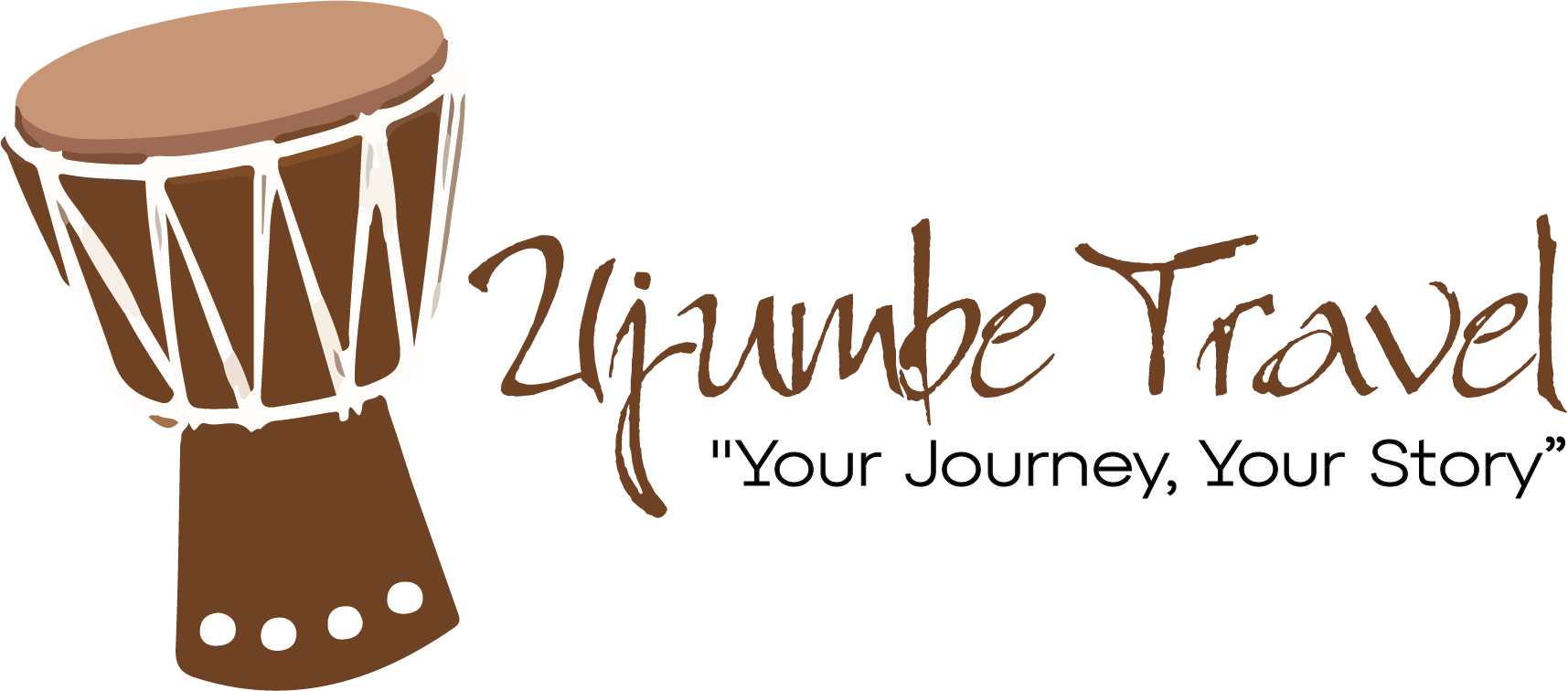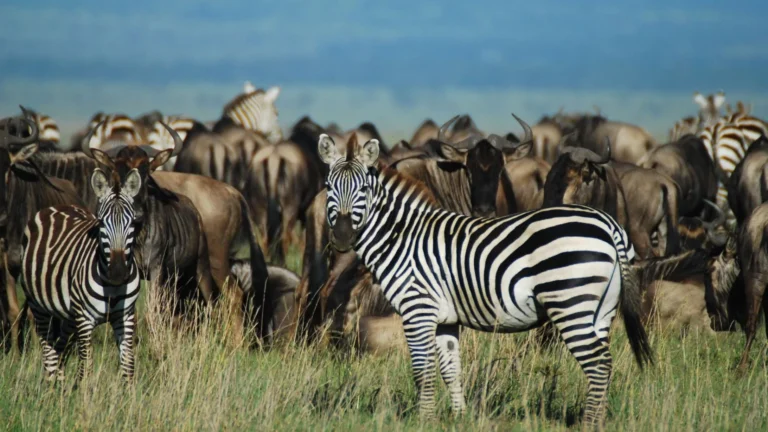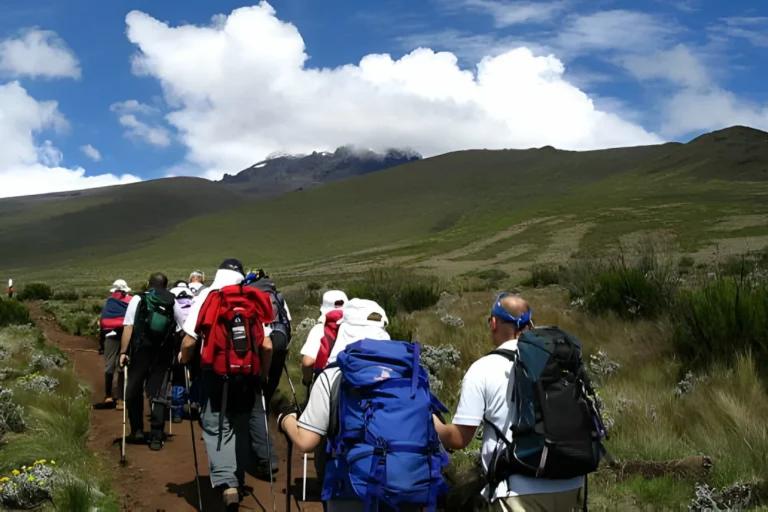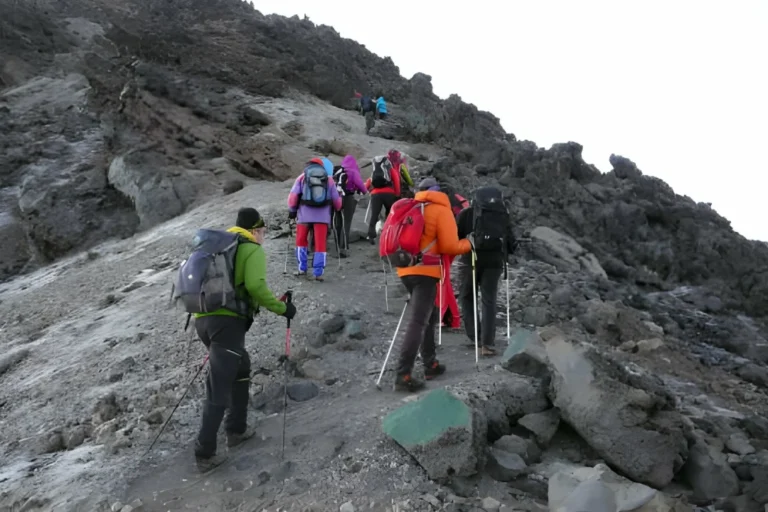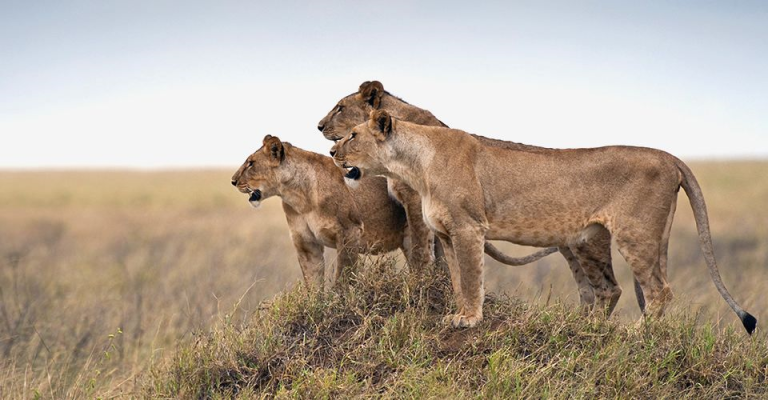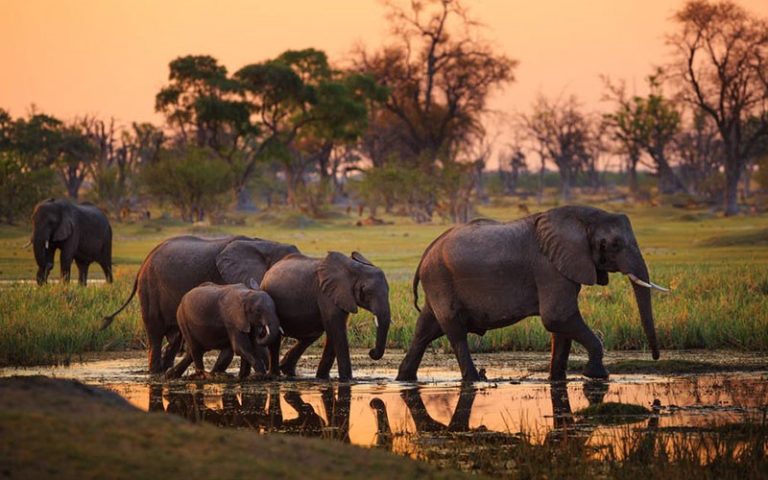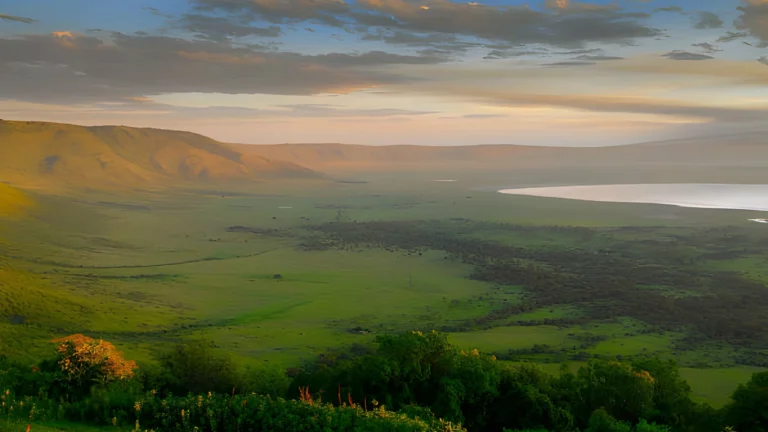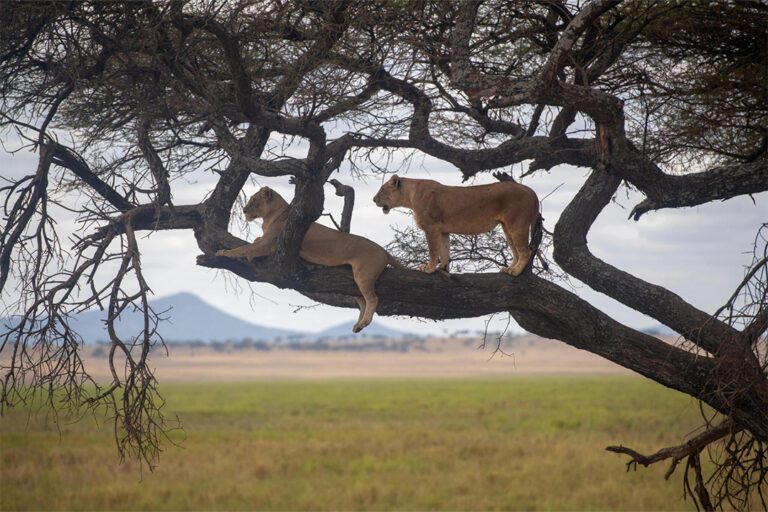Tanzania Safari
Experience the unmatched beauty of Tanzania’s wildlife and landscapes with us, where every safari is designed to offer an authentic and unforgettable adventure. From the vast plains of the Serengeti, home to the Great Wildebeest Migration, to the breathtaking Ngorongoro Crater, teeming with diverse wildlife, our safaris provide an up-close encounter with nature. With expert guides, well-planned itineraries, and carefully selected accommodations, we ensure a seamless and immersive experience. Whether you seek luxury, adventure, or a private wildlife journey, we tailor each safari to meet your needs. Join us and discover the true essence of Tanzania’s wilderness.
FAQ
Popular Questions about Tanzania Safari
The Great Wildebeest Migration
The Great Wildebeest Migration is one of the most spectacular wildlife events on Earth, where over 1.5 million wildebeest, accompanied by hundreds of thousands of zebras and gazelles, move in a continuous cycle across the Serengeti-Mara ecosystem in search of fresh grazing and water.
Key Phases of the Migration:
1. Calving Season (January – March)
📍 Southern Serengeti & Ndutu Plains
- Over 500,000 wildebeest calves are born within a few weeks.
- High predator activity as lions, cheetahs, and hyenas take advantage of vulnerable newborns.
2. Moving North (April – May)
📍 Central Serengeti & Western Corridor
- Herds begin moving towards the Grumeti River, facing challenges such as crocodile-infested waters.
- Lush green landscapes due to the rainy season.
3. River Crossings (June – August)
📍 Western Serengeti → Northern Serengeti → Masai Mara
- The most dramatic part of the migration, where wildebeest cross the Grumeti and Mara Rivers, facing strong currents and hungry crocodiles.
- One of the best times to witness thrilling action and predator-prey interactions.
4. Masai Mara & Return Journey (September – November)
📍 Kenya’s Masai Mara → Northern & Central Serengeti
- The herds spread across the Masai Mara in Kenya before starting their journey back south.
5. Back to Calving Grounds (November – December)
📍 Serengeti’s Short Grass Plains
- The migration moves back to Ndutu and southern Serengeti, completing the annual cycle.
Why is it Special?
- Recognized as one of the Seven Natural Wonders of Africa
- A bucket-list safari experience with incredible predator action
- Happens year-round, but the best viewing depends on timing
Would you like help planning a safari around the migration? 🚙🐃
The best time to visit Serengeti National Park depends on what you want to experience:
1. Best for the Great Migration (Wildebeest Migration)
- June to July – Best time to witness the river crossings at the Grumeti and Mara Rivers.
- January to March – Calving season in the southern Serengeti, with thousands of baby wildebeest born and plenty of predator action.
2. Best for Wildlife Viewing (General Game Drives)
- June to October (Dry Season) – Wildlife is easier to spot as animals gather around water sources. The weather is also pleasant with little rain and fewer mosquitoes.
3. Best for Green Landscapes & Fewer Crowds
- November to May (Wet Season) – Lush scenery, fewer tourists, and excellent birdwatching. However, roads can be muddy.
Overall Recommendation
- June to October for classic safaris and predator sightings.
- January to March for calving season and dramatic wildlife interactions.
- November to May for budget travelers, bird lovers, and photographers.
Would you like recommendations on specific lodges or safari itineraries?
Yes, you can withdraw cash from ATMs while in Tanzania, but here are some key things to know:
1. Availability of ATMs
✅ ATMs are widely available in major cities like Arusha, Dar es Salaam, Moshi, and Zanzibar.
✅ In remote safari areas (like Serengeti, Ngorongoro, or national parks), ATMs are rare or nonexistent.
2. Accepted Cards
✅ Most ATMs accept Visa and Mastercard.
✅ Some ATMs accept Maestro and American Express, but not all.
3. ATM Withdrawal Limits
💵 Most ATMs have a daily withdrawal limit of TZS 400,000–1,000,000 (about $150–$400).
💵 You may withdraw multiple times depending on your bank’s daily limit.
4. ATM Locations
🏦 Major banks with ATMs include:
- CRDB Bank
- NMB Bank
- NBC Bank
- Stanbic Bank
- Equity Bank
- DTB Bank
5. ATM Fees & Exchange Rates
💰 Tanzanian banks may charge TZS 10,000–15,000 ($4–$6) per withdrawal.
💰 Your home bank may also charge an international withdrawal fee.
💰 Exchange rates vary; using ATMs often provides a better rate than currency exchange bureaus.
6. Alternative Payment Options
✔ Credit/Debit Cards – Accepted at hotels, lodges, and big restaurants but not in local markets.
✔ Mobile Payments (Mpesa, Airtel Money) – Popular for local transactions.
✔ Carrying Some USD or EUR – Useful for emergencies, but ensure bills are newer than 2009 to be accepted.
Recommendation
- Withdraw cash in Arusha or major cities before heading to remote safari areas.
- Carry some USD as a backup.
- Inform your bank before traveling to avoid blocked transactions.
Would you like help finding the best ATM locations in your arrival city? 🚀💳
The ideal length of a Tanzania safari depends on your budget, interests, and the destinations you want to explore. However, here’s a general guide:
1. Short Safari (3–4 Days) – Best for Quick Getaways
✅ Perfect for those with limited time
✅ Covers 1–2 parks, usually the most famous ones
🔹 Example Itinerary:
- Day 1-2: Serengeti National Park (wildlife and big cats)
- Day 3: Ngorongoro Crater (dense wildlife, Big Five)
- Optional: Tarangire or Lake Manyara for extra variety
2. Standard Safari (5–7 Days) – Best for a Classic Experience
✅ Balanced safari experience with more parks
✅ Good mix of game drives, relaxation, and exploration
🔹 Example Itinerary:
- Day 1-2: Tarangire (elephants & baobabs) or Lake Manyara (tree-climbing lions)
- Day 3-4: Serengeti (wildebeest migration & predators)
- Day 5: Ngorongoro Crater (Big Five in a day)
- Day 6-7: Optional visit to cultural sites (Maasai village) or relax in Arusha
3. Extended Safari (8–12 Days) – Best for an In-Depth Adventure
✅ Covers multiple regions, including remote parks
✅ Ideal for photographers & wildlife enthusiasts
🔹 Example Itinerary:
- Days 1-2: Tarangire (large elephant herds)
- Days 3-5: Serengeti (Great Migration, predators)
- Days 6-7: Ngorongoro Crater & cultural visits
- Days 8-9: Lake Natron (flamingos, scenic hikes) or Ruaha (remote wilderness)
- Days 10-12: Selous or Zanzibar for beach relaxation
4. Ultimate Safari (14+ Days) – Best for Adventure & Relaxation
✅ Combines Northern and Southern Tanzania
✅ Includes off-the-beaten-path destinations & beach time
🔹 Example Additions:
- Ruaha & Nyerere National Park (Selous) for a wild, less crowded experience
- Mahale Mountains (chimp trekking)
- Zanzibar or Mafia Island for post-safari relaxation
Which Option is Best for You?
- 3–4 days: Short & sweet, perfect for a quick wildlife experience
- 5–7 days: A well-rounded safari with major highlights
- 8–12 days: In-depth safari covering multiple ecosystems
- 14+ days: Ultimate adventure with relaxation included
Would you like help planning a customized itinerary? 🚙🐘🌍
Yes, there are accommodations within Tanzania’s national parks, ranging from luxury lodges to budget-friendly campsites. Staying inside the park offers an immersive experience, with wildlife often roaming near your lodge or camp.
Types of Accommodations Inside Tanzania’s Parks:
1. Luxury Lodges & Tented Camps 🌟🌟🌟🌟🌟
✅ High-end lodges with premium services, private decks, and stunning views
✅ Located in prime wildlife areas within the parks
✅ Gourmet dining, spa services, and personalized safari experiences
🔹 Examples:
- Four Seasons Safari Lodge (Serengeti)
- Ngorongoro Crater Lodge (Ngorongoro)
- Singita Faru Faru Lodge (Grumeti Reserve)
2. Mid-Range Lodges & Tented Camps 🌟🌟🌟🌟
✅ Comfortable lodges with modern amenities at a reasonable price
✅ Located in good game-viewing areas inside the parks
✅ Great for families and groups
🔹 Examples:
- Serengeti Serena Safari Lodge (Serengeti)
- Tarangire Safari Lodge (Tarangire)
- Rhino Lodge (Ngorongoro)
3. Budget Campsites & Public Camps ⛺🌟🌟🌟
✅ Affordable for budget travelers and backpackers
✅ Basic facilities (shared bathrooms, dining areas)
✅ Located inside parks for close wildlife encounters
🔹 Examples:
- Seronera Public Campsites (Serengeti)
- Simba Campsite (Ngorongoro Crater Rim)
- Tarangire Public Campsites
Why Stay Inside the Park?
✔ Better wildlife viewing – Animals are active early morning & late evening
✔ Less travel time – No need to drive long distances from outside accommodations
✔ Unique experience – Sleep with the sounds of nature all around you
Would you like recommendations based on your budget and preferences? 🚙🏕️🌿
Trekking Adventures
- Mti Mkubwa Camp, Shira1 Camp, Shira2 Camp, Barranco, Karanga Camp, Barafu Camp, Mweka Camp
- Hotel to Mandara Hut, Horombo Hut, Kibo Hut, Summit to Horombo Hut, Horombo Hut to Moshi
- Momella gate, Miriakamba Hut, Saddle Hut, Socialist Peak, Miriakamba Hut to Momella gate
